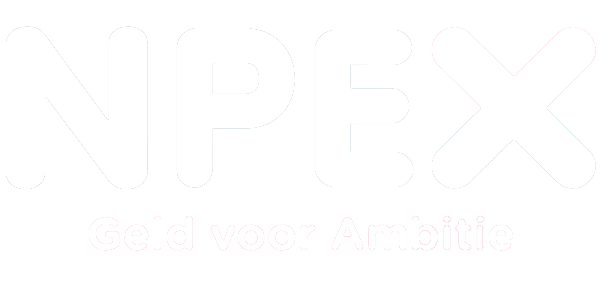After a full week of in-depth information about SharePoint 2010 at the devconn in Vegas it is time to try to structure my thoughts about it. As being a (almost) lifelong ECM architect and really happy with tools like Documentum and FileNet it is not easy not to be skeptic about SharePoint. Yes it is Microsoft and yes they threw a lot of money to it, but is MS able to make/copy a fully enterprise ready ECM solution within 3 years where others are trying already for 15 years or more.
The answer is like a lot of MS tools: yes and no:
Yes, SharePoint is by far the best interface to do any work on unstructured data.
No, SharePoint is not able to support an enterprise to maintain and control documents on an enterprise level.
Here are my results:
It was a developer conference so maybe I was in the wrong place for this, but I have not seen any presentation about how SharePoint is filling in the current ECM demand and vision. Everybody that I talked with or who presented where real experts on SharePoint and technical state of the art architects. The MPV’s of SharePoint really know their business. But when I start about how do you set up an enterprise architecture to support enterprise wide ECM it all boils down to creating technical workarounds or third party solutions to try to set your enterprise rules and regulations.
So SharePoint is the best tool to support collaboration in a workgroup environment where you in smal(ler) silo’s maintain your rules and work on the content.
It is interesting to see how all SharePoint experts except how good the interface of SharePoint actually is. When you are used to the interface of Documentum and suddenly are confronted with the SharePoint possibility to create lists, interact with Office, etc. you are stunned. All long time users really like the new interface but don’t see any more how much richer it is compared to a lot of others out there. The integration with Office to read or edit a document from within the office app is so easy and natural that people will really like to use it. The big yellow button in Word2010 to edit a document, the automated show of SharePoint properties in Word and the possibilities to change and use them within your documents are so good.
The possibility to create forms/lists from InfoPath is in 2010 very strong. This supports the no coding concept so much easier. You can customize a screen for a specific user role without very much technical skills or in-depth knowledge of SharePoint.
I was even more amazed how they set up the social computing options within SharePoint. One of the tough questions I get a lot is, how do I combine all the private social media that my workers use and the way they collaborate and share their knowledge, with the enterprise (controlled or semi-controlled) demands for collaboration and knowledge sharing.
In the new Sharepoint2010 options you are able to reuse all social media like Facebook, Twitter and LinkedIn but control them on a company level (see the comments on the enterprise problems of SharePoint). This gives users a real ‘I can configure it how I like it’ idea but still be able to control it from a central view.
Now the technical architecture side of things: This is where I don’t understand what SharePoint is doing or which way they are going. Within a site most of the data is still maintained in one SQL table. The default option is still to store documents in RDBMS blobs and all is still limited to the size of that table. Site collections have a limit because of this. Setting up an enterprise solution within a global organization is impossible, distributed solutions are a mess and if I talk to the independent experts they advise you not to follow the guidelines of Microsoft and set up a sort of sitecollection in sitecollection approach. On paper this looks nice but gives you tons of limitations because the replication between sitecollections is limited. Besides the architecture I also see some risks in the enterprise management of the customizations. If you have multiple groups working on different projects within a SharePoint solution, they will have a huge challenge to maintaining their customizations and coding and be sure of the impact of any change. SharePoint customizations are really designed for small groups of (preferably 1) consultant(s) who talks with the users and builds their individual needs.
And then there was workflow. This has always been one of my markers. Giving a demo of workflow management is always easy and it always looks so good, but when the real thing comes in workflow, or even worse, business process management is not easy.
When a company wants to use real BPM it needs to be able to maintain the workflows on a corporate level. Things like orchestration and overall process monitoring is a minimal requirement. SharePoint talks about workflow and even the option of business process management, but the tool is way, way off to get this wright. Doing some basic document routing and some basic document approval is possible, but when you want to do any enterprise workflow it will be a lot of C# coding that kicks in. Having an overview of all the steps in one workflow is impossible let alone a whole orchestration of business processes. If within an organization a running workflow needs to be changed, defining the impact of the change can only be done by a programmer and probably only by the programmer that created the workflow in the first place. This is not the way you want to go.
Overall I am impressed by what functionality SharePoint has to offer when it comes to collaboration and user experience. They have set the new standard on how users will want to interact with systems that control their unstructured data. On an enterprise level using SharePoint is still tricky. You really need to define your architectural design up front and use a silo-ed approach of maintaining your data and customization. Otherwise you will end up with a mess or a not performing system. So yes SharePoint will challenge all other vendors to finally put way more effort in the user experience or die, and NO SharePoint is still a long long way off from being a competitor for real ECM solutions like Documentum or FileNet.
Combining the two worlds is still the best way forward.


















